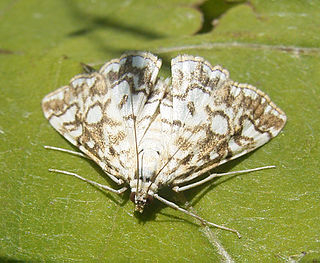
Fusa is a municipality in Hordaland county, Norway. It is located east of the city of Bergen in the Midhordland region. The administrative centre of the municipality is the village of Eikelandsosen. Other villages in the municipality include Fusa, Holdhus, Holmefjord, Vinnes, Strandvik, and Sundvord. The Frank Mohn company's Fusa marine division is headquartered here, with almost 500 employees.

Os is a city and municipality in Hordaland county, Norway. It is located in the Midhordland region, just south of Norway's second-largest city, Bergen. Due to its proximity to Bergen, Os is experiencing strong population growth. The administrative centre of Os is the village of Osøyro. It is the largest settlement in the municipality, with over 60% of the municipal residents living here. Other large villages in Os include Hagavik, Halhjem, Søfteland, Søre Øyane, and Søvik.
Skogseidvatnet is a lake in the municipality of Fusa in Hordaland county, Norway. The 5.3-square-kilometre (2.0 sq mi) lake lies in the Hålandsdal valley, about 7 kilometres (4.3 mi) east of the municipal centre of Eikelandsosen. Water from the river Orraelva and the lake Gjønavatnet flow into the lake, and then it flows out into the lake Henangervatnet before flowing out into the fjord.
Agylla is a genus of moths in the subfamily Arctiinae. The genus was erected by Francis Walker in 1854.

Asura is a genus of moths in the subfamily Arctiinae erected by Francis Walker in 1854.
Heliosia is a genus of moths in the family Erebidae erected by George Hampson in 1900.
Lambula is a genus of moths in the family Erebidae. The genus was erected by Francis Walker in 1866.
Thallarcha partita is a moth of the subfamily Arctiinae first described by Francis Walker in 1869. It is found in the Australian states of New South Wales, Queensland and Victoria.

Thallarcha sparsana, the fair footman, is a moth of the subfamily Arctiinae. The species was first described by Francis Walker in 1863. It is found in the Australian states of Victoria, New South Wales and Queensland.
Thallarcha is a genus of moth in the subfamily Arctiinae.

Loxostege is a genus of moths of the family Crambidae.

Pyrausta is a specious genus of moths of the family Crambidae. The genus was erected by Franz von Paula Schrank in 1802.

Fusa Station is a railway station operated by JR East’s Abiko Branch Line of the Narita Line located in Abiko, Chiba Prefecture Japan. It is 12.1 kilometers from the terminus of the Abiko Branch line at Abiko Station.
Fusa Province was an ancient province of Japan, in the area of Shimōsa and Kazusa provinces. At the time of the establishment of Kazusa Province, it also included the southern tip of the Bōsō Peninsula that would later be split off as Awa Province. The ambit of this ancient entity is within Chiba Prefecture and Ibaraki Prefecture. It was sometimes called Sōshū (総州).

Acentropinae is a fairly small subfamily of the lepidopteran family Crambidae, the crambid snout moths. Species of this subfamily are exclusively found in wetlands and aquatic habitats.

Fusa Church is the main parish church in Fusa municipality in Hordaland county, Norway. It is located in the village of Fusa. The church is part of the Fusa parish in the Hardanger og Voss deanery in the Diocese of Bjørgvin. The white, concrete church was built in 1962 by the architect Ole Halvorsen. The church seats about 350 people. It is the fourth church building to be built on this site.

Sundvor Church is a parish church in Fusa municipality in Hordaland county, Norway. It is located in the village of Sundvord, serving the far southern part of Fusa municipality. The church is part of the Fusa parish in the Hardanger og Voss deanery in the Diocese of Bjørgvin. The white, wooden church was built in 1927 as a "chapel". The church was designed by the architect Erlend Tryti. The church, which seats about 228 people, was consecrated on 14 October 1927. In 2000, the chapel was upgraded to a "church".
The Flinders University Student Association (FUSA) is a student union at Flinders University, South Australia. It provides free welfare services, academic advocacy, grants for clubs and societies, and funding for the student newspaper, Empire Times. It also organises an O'Week each semester, as well as various social events throughout the year.













